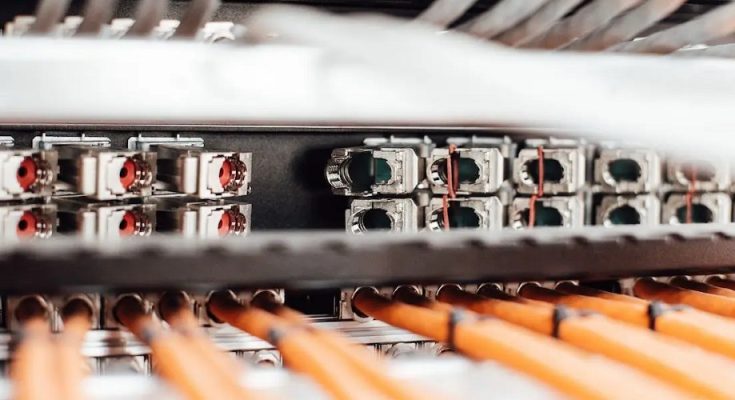Build A Server: As a result, you want to eliminate your hosting provider. Why? Simple – it gives you complete control. Hosting any software without restrictions and incurring large monthly fees is possible. Update the hardware when you need more money. Most significantly, I no longer share a web server with bothersome neighbors. I’ll show you how to construct a host in the following instruction. You will require:
1 – Server equipment.
2 – A high-speed internet connection.
3 – Hardware for networking.
4 – Software for the operating system.
5 – The Cooling system.
6 – Tools for monitoring.
Let’s get started. Roll up your sleeves.
What Is A Server?
A machine is a system that interacts with other computers known as customers. It provides resources for powering providers across a community. These include information processing and conducting apps. Organizations employed them at the time to securely store data. However, since the 1990s, this technology has become an essential component of the world wide web. It today powers websites, remote databases, cloud computing, and various other apps. So here’s how to build a server:
How To Build A Server?
Here are the steps to build a server.
1. Determine Your Requirements
Defining your requirements allows you to save cost and effort. For example, hosting private data necessitates the installation of an inexpensive-cost house server. It may be used to operate simple websites and save documents. On the other hand, the stakes rise when it comes to tasking employment. Business websites, for instance, require continuous uptime. Handling high site traffic necessitates a large number of resources. You do not want your consumers to leave due to poor performance. The same is true for platforms that run media-rich apps, such as gaming and streaming. To provide scheduled services, you will require a powerful system.
2. Computer Hardware
Consider the following hardware while deciding how to construct a worker:
CPU – A central processing unit (CPU) is a gadget that manages webserver tasks. Consider purchasing a Celeron unit for a simple arrangement. It’s small and can run light activities flawlessly. You should use Ryzen or Xeon CPUs for entrusting workouts. Despite their high price, they are capable of running complicated apps.
Motherboard – The worker’s spine, also known as the framework board. It allows all of the PC’s portions to communicate with one another. Again, HP, Dell, Asus, and ASRock are all excellent choices.
RAM – Random access memory is a component that temporarily stores information for processing. DDR4 RAM is required for your worker. It features several channels for faster data processing.
Hard Drive – A gadget for storing documents on the framework. You may make your worker by using an SSD drive. It provides up to 20 times the recommended velocities of standard hard plates.
Cooling – A worker generates heat while running apps. It will surely separate if not properly cooled. To avoid this, you’ll need a large fan.
Undercarriage – A case is a metal package that houses your worker’s segments. It has holes where you can put things. Again, IStarUSA offers a wide range of affordable choices. Supermicro, Athena, and Rosewill are some more choices for your little worker to assemble.
Power Supply – For simple tasks, a 300-watt unit is required. For heavy-duty apps, 500 watts is a good starting point.
Illustrations Card (Optional) – Processors include a design driver. These are also fantastic for running most apps. For case, gaming, streaming, and mining require greater processing power. When creating your web worker, consider purchasing a dedicated illustration card.
DVD Drive (Optional) – Nowadays, everything is available from the web. However, you may use an optical drive to use a bespoke image. Similarly, it aids in the saving of reinforcements on a DVD.
3. Networking Equipment
As a case, if you’re wondering how to make a worker, buy broadband equipment. To begin, obtain a networking card. Most are generic and blend flawlessly with the most functioning frameworks. They range in price from $20 to $50 apiece. Next, purchase a class 6 (cat6) switch and an Ethernet connection. It allows you to expand your data transmission capacity requirements later on. If this happens, all you have to do is change your arrangement with your network access supplier. D-Link, Startech, TP-Link, and more reputable brands are available. Your requirements also determine speed. Shared facilitating providers limit it to roughly 10Mbps. That is ideal for light errands. On the other hand, requesting web hosting on VPS workers comes with at least 100Mbps.
4. Operation System
The next most effective way to make a worker is to select a working framework (OS). Alternatives to closed-source programming are awesome. Aside from being free, they have a devoted following on the web. Along these lines, you can typically seek assistance from web networks. Any Linux adaptation is ideal for your web server. This is because all OSs at this point are free of charge. However, there is just one test: designers can modify the procedure at any time.
Consider IBM Red Hat’s CentOS 7 and CentOS 8 operating systems. They were the most well-known apps for driving employees. Regardless, the group will stop supporting them by 2024. But enough of the depressing stuff. There are about 600 different operating systems from which to construct your worker. CentOS’s direct competitors, for instance, are RockyLinux and AlmaLinux. Other distributions include Ubuntu, Debian, Fedora, OpenSUSE, and more.
You may also experiment with the best options. For instance, you may use Windows to use business apps. It also provides constant adaptability for asset redesign. Aside from that, it’s a good choice for collaborative projects. Another option for developing a simple home worker assembly is MacOS. It is ideal for customers that enjoy using Apple products. You may use it as anything other than a regulator for your Apple TV and iOS devices.
5. Set Everything Up
This is the most intriguing aspect of how to construct a worker. To begin, you’ll need to gather all the parts in one location. Then, look over the documentation provided by the makers. Then, locate step-by-step instructions for assembling the parts. Another option is to search the web for guides. DIY recordings can be viewed on YouTube. Similarly, you might hire an expert to repair it. You now realize how to make a worker. Upkeep, on the other hand, is another story.
6. Upkeep And Maintenance
You should be cautious when dealing with particularly well-assembled home employees. They must be maintained, or you risk having problems. Apps, for instance, may become sluggish or crash. To guarantee that everything runs well, you must:
1 – Update the product regularly.
2 – Before doing refreshes, reinforce the webserver.
3 – Using observation devices, check the equipment’s health state.
4 – Replace damaged parts as needed.
5 – Clean the equipment using compressed air.
6 – Clean the equipment utilizing packed air.
Okay, but how much will this cost?
7, How Much Does A Server Cost?
If you’re considering how to make a worker, the cost is most certainly your first worry. As previously said, everything is dependent on your requirements. A basic arrangement is in the region of $600 to $900. It will cost you $1,000 or more for a robust setup. Here’s how it works:
A Celeron CPU starts at $62. It’s a low-spec version of Intel’s CPU arrangement. You may choose from great choices that cost $300 or higher. AMD’s Ryzen processors are awesome at every cost. They provide additional centers for dealing with sophisticated apps. You may purchase a standard hard circle if you’re working on a budget. A 4,000GB (4TB) drive now costs $104. That is the same price as a 500GB SSD. Despite having less capacity, your bespoke worker construct will function faster.
When it comes to motherboards, go with the best. As a good rule of thumb, you should spend at least $250. Then, you’ll be able to progress to newer portions without worrying about overlap. Time is also an important aspect of how to make a worker. You may need up to 72 hours to complete the arrangement. In terms of labor costs, this ranges from $120 to $720.
8. Build Your Own Server Choices
Building workers are costly. If you are on a tight budget, purchasing an immediate machine is better. Costs start at around $350 from retailers such as Amazon. In connection, that is 60%, not exactly a home-constructed replica. The cause is as follows:
Sellers service a wide range of customers. They are prepared to order large quantities of devices from manufacturers. They can expect cheaper costs this way. This benefit is passed on to you, the buyer.
However, that is not your only option.
Isn’t it true that you already realize how to construct a worker? So why not convert an old computer?
It will save you money because you’ll not need to set up any equipment.
Final Words: Build A Server
If you want to build a home worker, you may start immediately. You’ll like having total control over your assets. That is something that facilitating groups rarely provide. However, the cost is relatively high. Equipment is expensive. It also takes hours to set up the framework. In this case, hiring an expert may be the best option. You’ll have to dig further into your pockets to complete it. You have all the information about the most effective way to assemble a worker. Apart from being costly, it is anything but an attempt.



